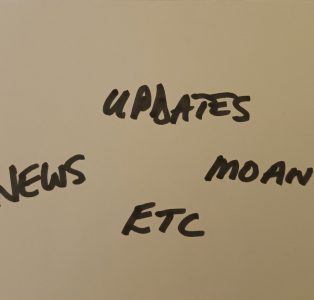I recently – and somewhat reluctantly, attained a milestone birthday of six decades. Mentally I do not feel this age, but physically a little less so. As a result of this achievement my son decided to push the boat out and bought me some really nice gifts. Included was a timepiece orientated book. Now normally he would not be so foolish to buy me any books on this subject as I buy up most that come to my attention. In this instance he took a large gamble and was in fact lucky that it had passed me by. The book in question is All in Good Time – Reflections of a Watchmaker, by the late, great George Daniels.
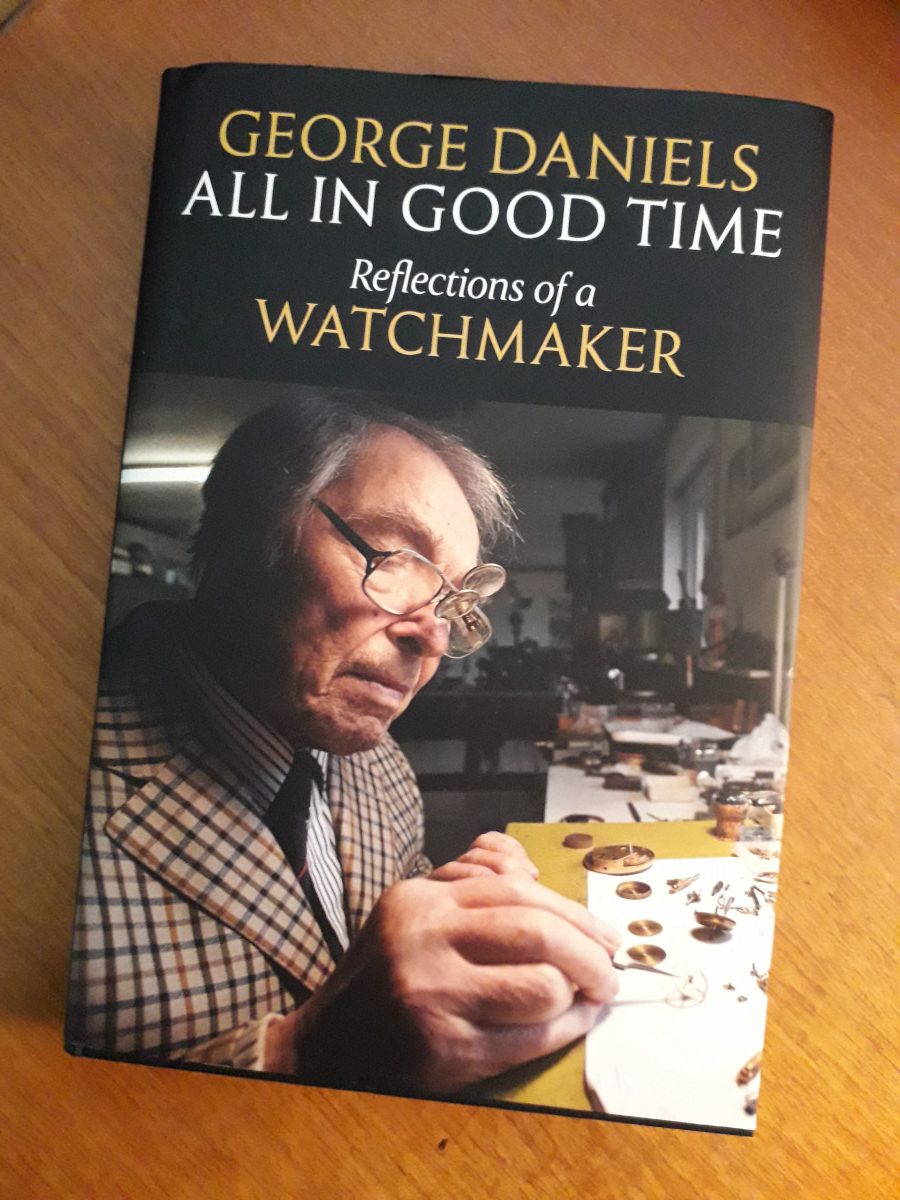
I had been aware that there were books written by Daniels – or about him, but as he mainly made clocks and pocket watches for most of his career, I was never particularly drawn to his orbit. I was of course aware of his connection with the co-axial escapement but never fully appreciated his involvement. This, of course, was a gross error. I had also seen and met Roger Smith, his protégé, at the last QP event nearly a year ago, when he was on a panel of experts discussing watch innovations. Naturally, Daniels’ name was raised.
So, when I received my gift I was pleased rather than ecstatic. However, a couple of days later I started to read, and then could hardly put it down. In fact I finished it in a few days! All I can really say is that it is one of the most readable and interesting books I have read in years. Frankly, even if the reader has little interest in horology, I defy them not to be captivated.
Daniels has a very easy way of writing – intelligent but not too highbrow. He conveys details of his life almost in an almost casual and abstract way. Clearly his upbringing was very difficult, with by the sound of it, quite unpleasant parents. With such early privations many would have grown up lacking self-confidence or worse. Not so Daniels, who in fact seems to have been driven by such problems to escape and better himself. Initial relief seems to have occurred courtesy of the 2nd WW, by being called up in late 1944. As a clerk in the Middle East, he had time to tinker with watches and with knowledge gained by previously reading horology books, was the first port of call for the battalion’s watch issues!
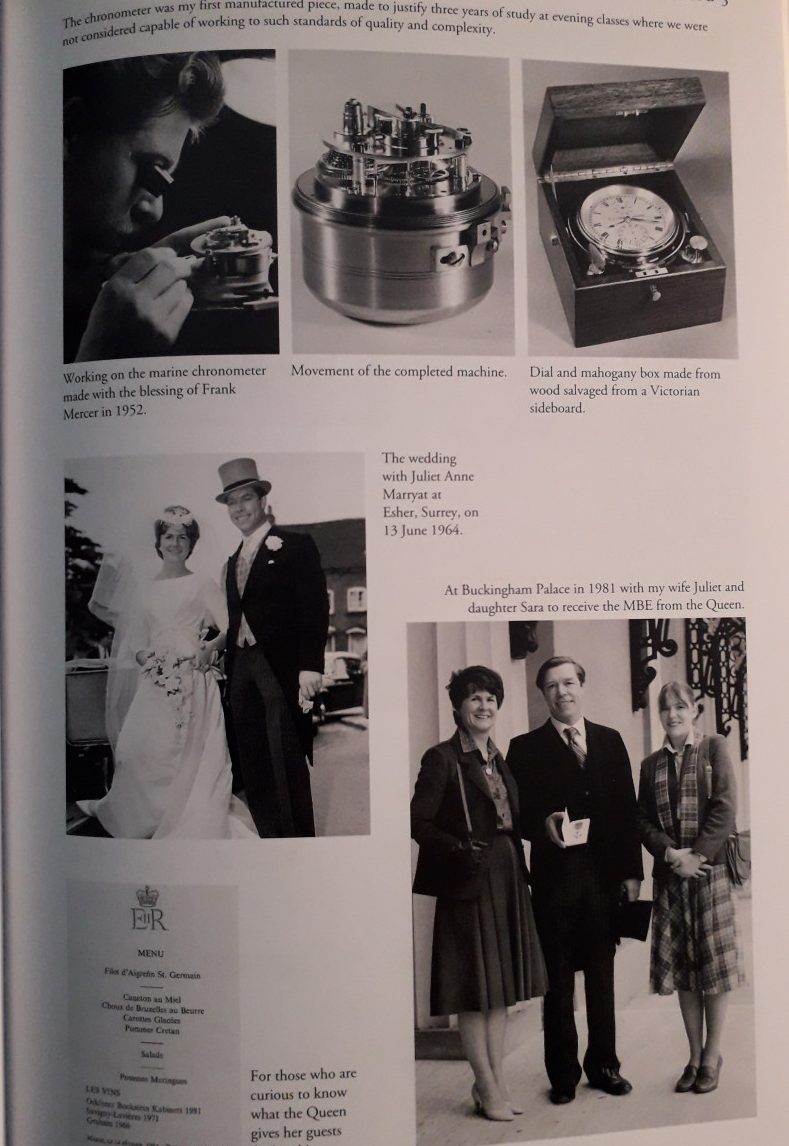
After demob in 1947 and back in Britain, a chance encounter at a shop led to a job repairing watches. After a few years Daniels was able to start his own business which became very successful. All this allowed him over the years to indulge his passion for vintage and classic cars, and he built up a collection of historically important and expensive vehicles. Being a skilled engineer, much work was done by himself. The cars were no museum pieces though, some being regularly and vigorously campaigned in races.
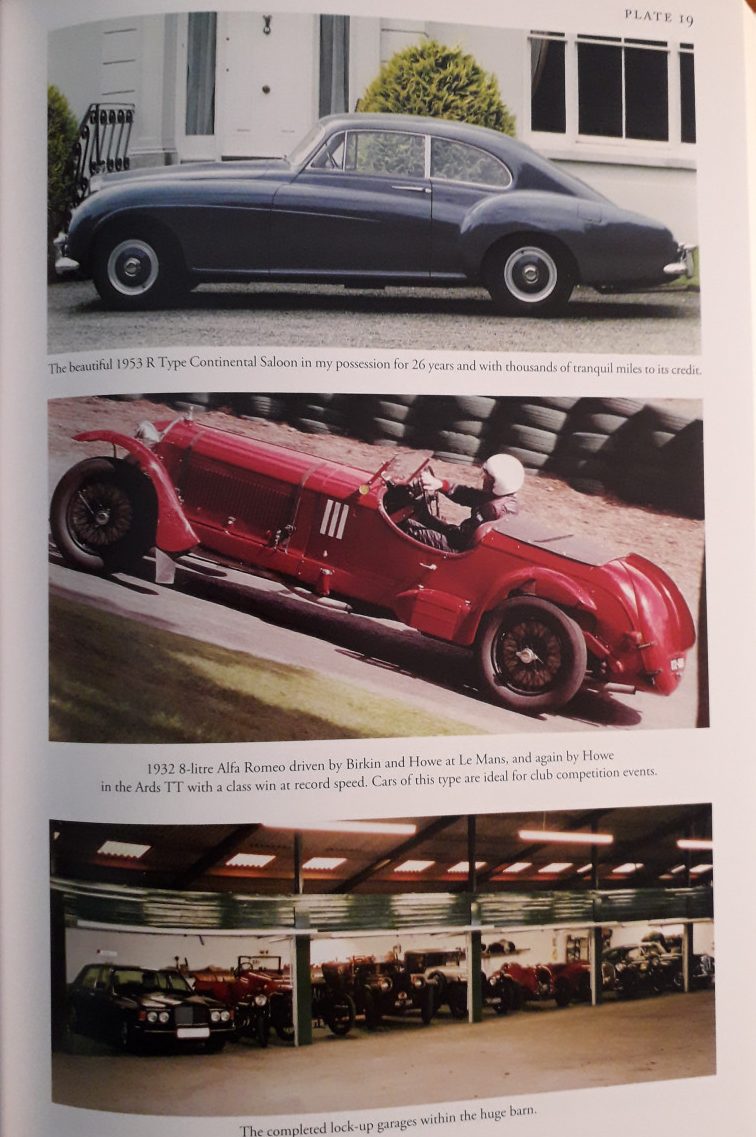
All the aforementioned was building up to Daniels’ first target, and that was to build a high quality watch from scratch. After much research and work, Daniels’ first totally hand-made watch was finished in 1969 – a commission for Sam Clutton, a friend met through vintage cars. The piece was a pocket watch with Breguet flavours, including a tourbillon – but also with some Daniels features. Clutton loved the watch and word got around. As such six more movements were made.
In the early Seventies Daniels had another target, and that was to try and improve accuracy and reliability of the mechanical watch. One has to remember that at this time the watch industry was being savaged by the advent of accurate, low maintenance and worryingly cheap quartz watches from Japan – led in particular by Seiko. Daniel’s conviction was that the existing lever escapement found in mechanical watches – which had been around since the mid-1700s, was just not efficient enough to compete with the electric interlopers. Lubrication and servicing requirements were but two identified problems, but also reduced accuracy. Daniels wanted to achieve a maximum variation of 1 second per day and 30 seconds per month!
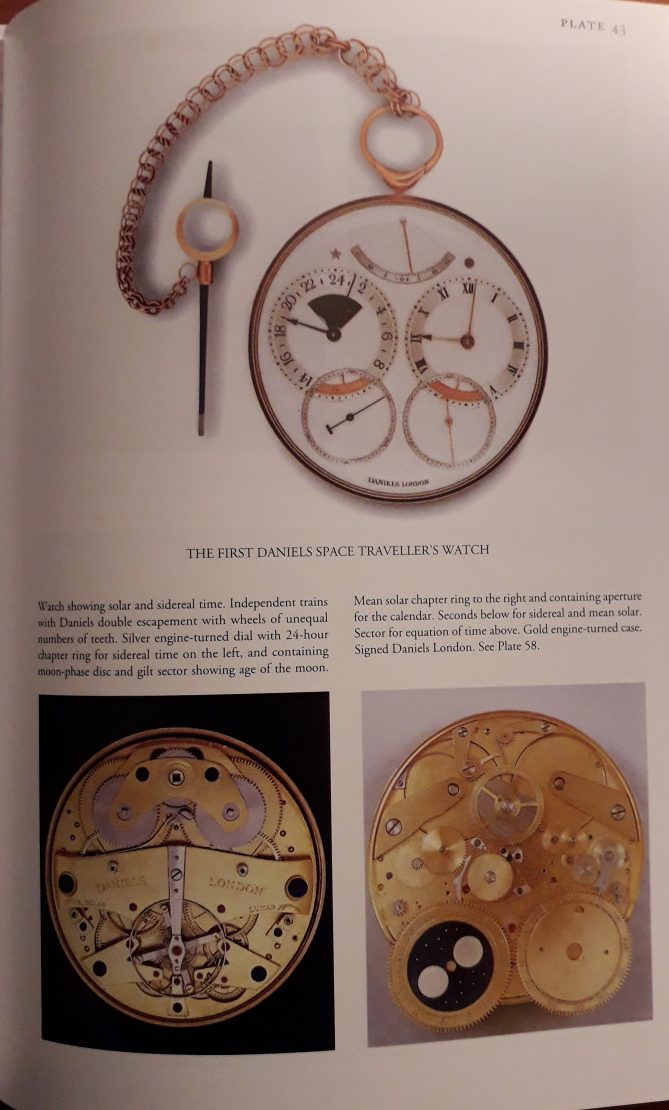
By 1974 the first designs were finished and were based on Breguet’s abandoned escapement idea. Daniels was then asked to put his plans into action with a commission from Seth Atwood, an American collector who also had a museum. This was after Daniels has done some restoration work on some watches and a Breguet Sympathetic clock which when he received it had no movement! The new watch was a success and was known as the Space Traveller type. However more improvements ensued and the movement now boasted two escape wheels – hence the name “co-axial escapement”. Again, success as no lubrication was required and a high level of accuracy obtained. Prizes were awarded, Observatory tests proved quality and more recognition occurred. In 1978 Daniels reduced the movement size and made a wristwatch.
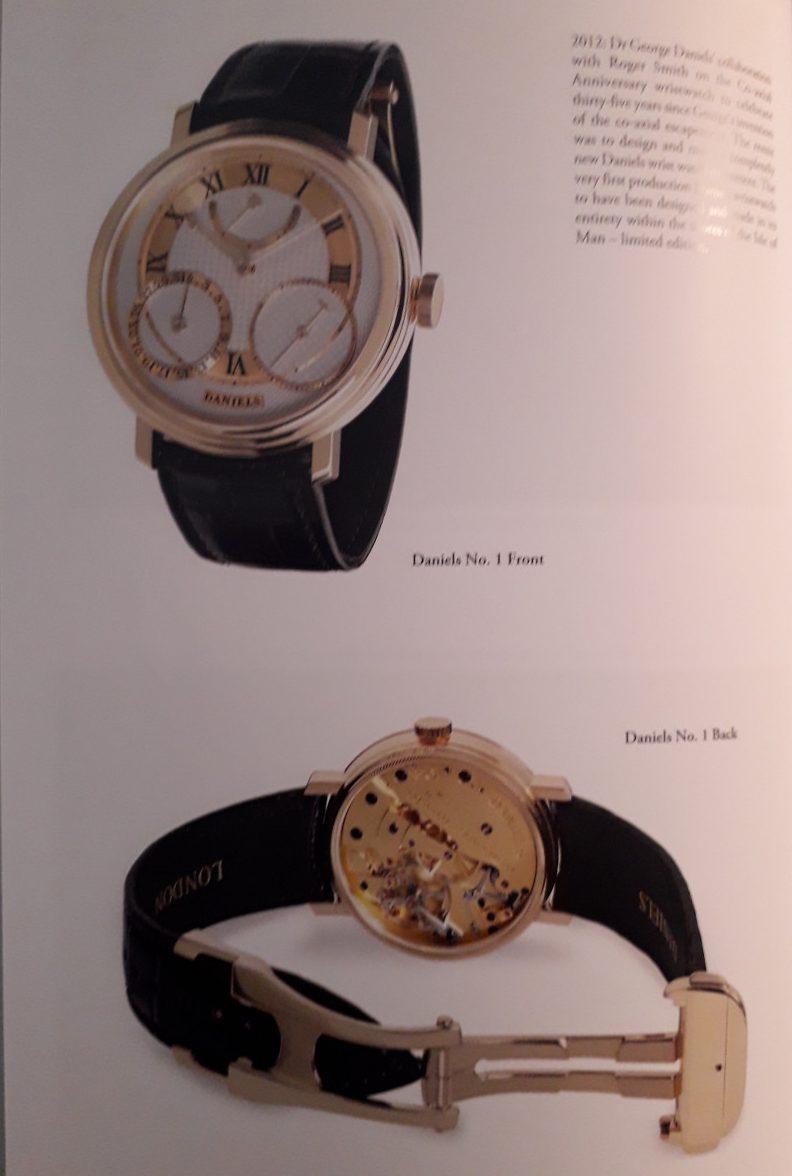
By 1982, Daniels and his wife decided to relocate to the Isle of Man. They decided on a large period property, Riversdale, which also had decent land. Improvements were mad, including watch making workshops and car garaging!
Throughout the Seventies, Daniels attempted to convince the big Swiss marques of the efficacy of his co-axial movement – including Patek Phillip and Rolex. Although there was much discussion, with prototypes based on their existing watches being made, nothing came of it. The brands just did not think the design would be successful! In fact, and unbelievably, it would not be until 1994 that a contract was signed with Omega but not launched until 1999? The rest, as they say, is history. Most of the major watch brands have used this form of movement type ever since.
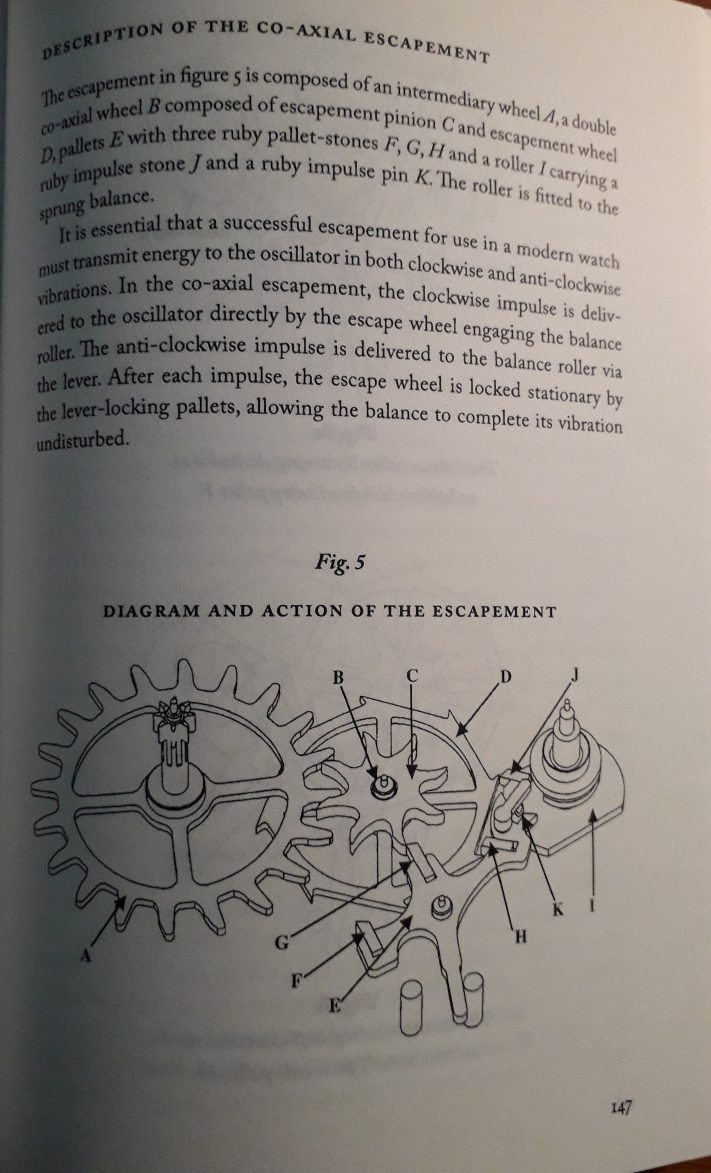
I am not great book reviewer as can be seen – and the photos are not great either! However, I have attempted to give a flavour of Daniels’ achievements, which, by any measure are extraordinary. In fact, what he achieved in his long life was amazing and makes the rest of us look pretty inadequate! Daniel’s passed away on the 21st October 2011 aged 85 – spookily my birthday, and of course Trafalgar Day!
The book was first published in 2000 and was last reprinted in 2018. After Daniels’ demise his friend David Newman, and protégé Roger Smith, both wrote very interesting additions to the book. It is to be noted that Daniels left Roger all his watchmaking equipment so he could continue his legacy. This Roger has done brilliantly – but that is another story.
In conclusion, the book is a great read and can be obtained for around £25 and as such represents superb value. I will investigate more of the great man’s books methinks.
Words; The Writer.
Images: The Writer and taken from the book.


